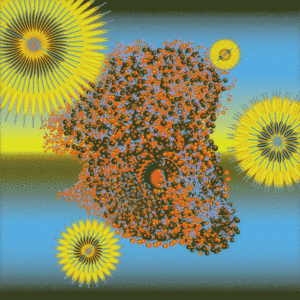Young blood
Trace of hope for Alzheimer’s patients

Injections of blood plasma from young people show promise for helping Alzheimer’s patients regain some ability to perform basic daily tasks that are crucial for independence, according to a small, early phase Stanford clinical trial.
The improvement in functional ability was a surprise, says Sharon Sha, MD, a clinical associate professor of neurology and neurological sciences at Stanford and the trial’s principal investigator.
But she cautions that more study is needed, considering the trial included only 18 people and results were reported by patients or their caregivers. Participants didn’t show improvements in either mood or cognition.
“Our enthusiasm concerning these findings needs to be tempered by the fact that this was a small trial,” Sha says. “But these results certainly warrant further study.”
Sha presented findings from the trial Nov. 4 at the 10th annual Clinical Trial on Alzheimer’s Disease conference in Boston. The trial tested the safety of plasma injections and a hypothesis based on findings by Tony Wyss-Coray, PhD, a Stanford professor of neurology and neurological sciences, that blood from young mice can rejuvenate brain tissue and improve cognitive performance in old mice. Plasma infusions, which have been widely and safely used for other medical applications, were found safe.
The researchers also found hints that people with Alzheimer’s who received plasma from young people showed improvements in functional abilities — performing such basic daily life tasks as remembering to take medications, paying bills and preparing meals. The plasma used for the trial was from donors between ages 18 and 30.
The trial was conducted in two stages over six months with people with mild to moderate symptoms of Alzheimer’s disease. During the first part of the trial, nine patients received infusions of plasma — the liquid, cell-free part of blood — and nine received a placebo of a saline solution. Participants and their caregivers didn’t know which they received.
During a second trial phase, people who had been receiving plasma were given the placebo and vice versa. After each period of infusions, each participant took tests to assess mood, cognitive ability to do such things as memorize lists or recall recent events, and functional ability to perform life tasks.
Sha says participants who received plasma showed no significant changes in mood or cognitive ability, but showed statistically significant improvements on two of three different assessments of functional ability.
The trial was sponsored by Alkahest Inc., headquartered in San Carlos, California. Wyss-Coray is a co-founder of Alkahest but wasn’t involved in the clinical study.
“I’m excited to see that giving repeated infusions of plasma to elderly people with Alzheimer’s disease is safe and that we can move forward to larger studies,” says Wyss-Coray, who is also a senior research career scientist at the Veterans Affairs Palo Alto Health Care System. “But I’m also realistic enough to know that it is very easy to cure diseases in small animals and a million times more difficult in humans.”

